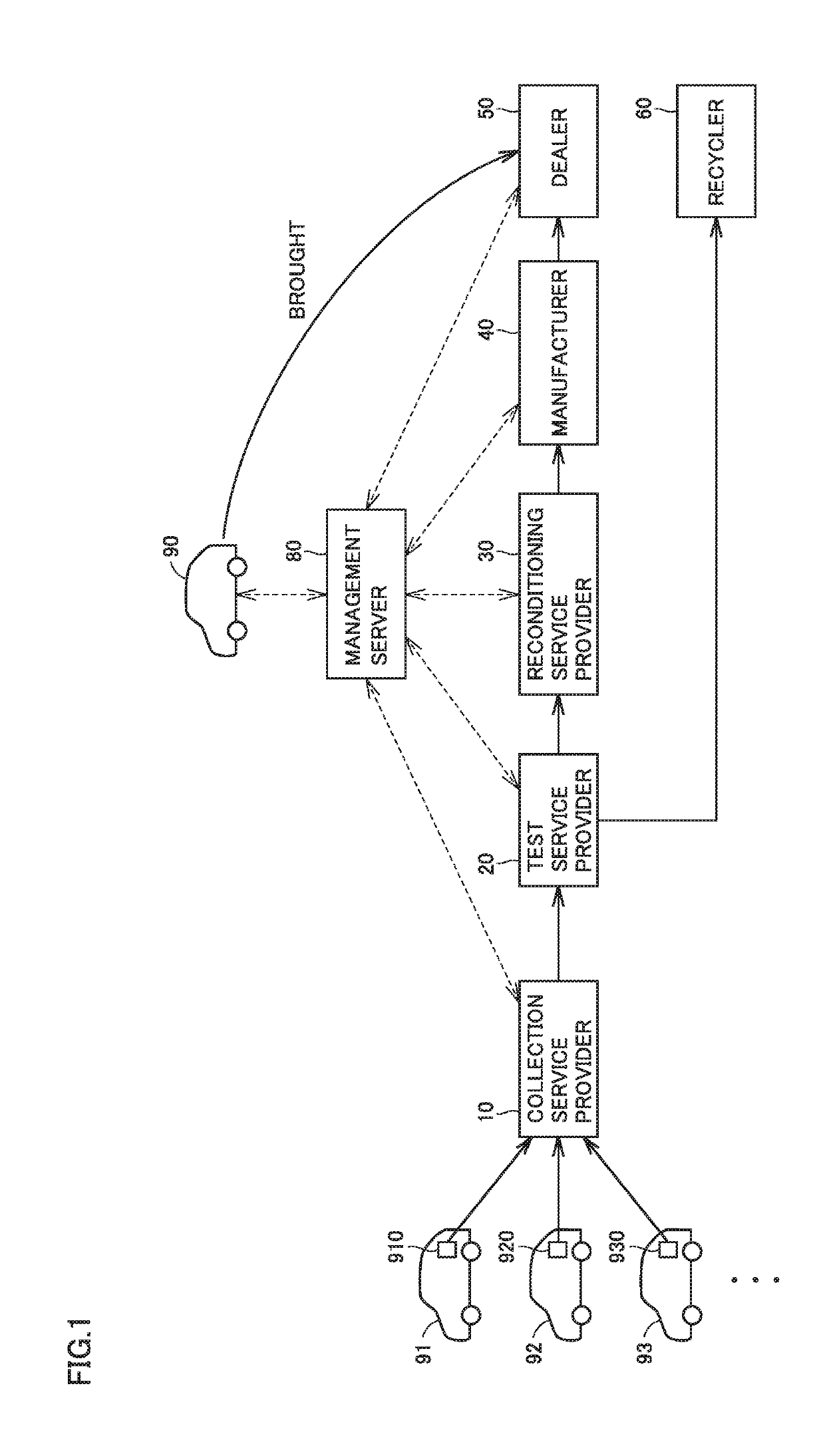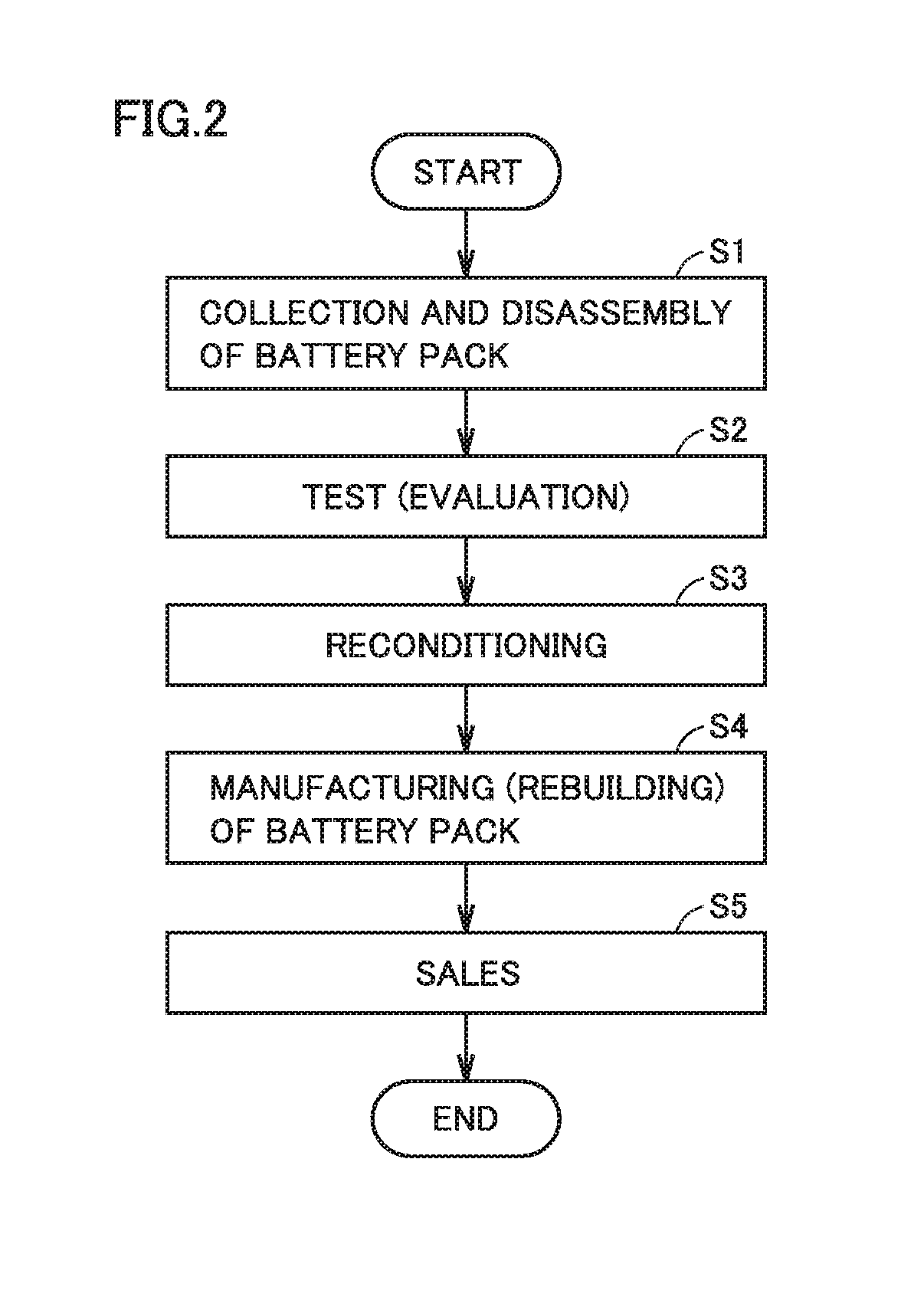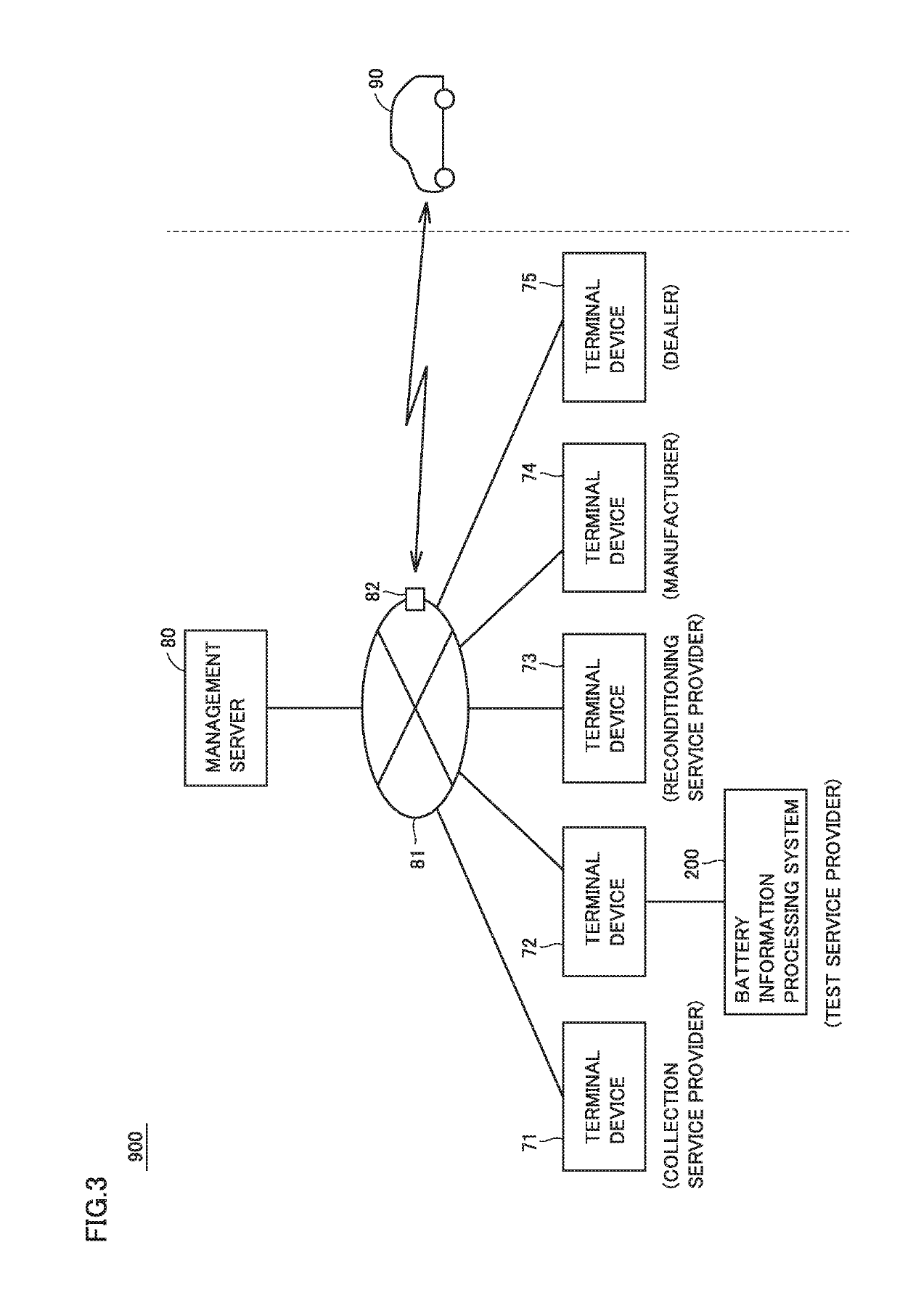Battery information processing system, battery assembly, method of evaluating characteristic of battery module, and method of manufacturing battery assembly
a battery module and information processing system technology, applied in secondary batteries, battery servicing/maintenance, instruments, etc., can solve the problem of lowering the accuracy of measuring the ac impedance of the secondary battery, suppressing the variation in the soc of the battery module, and lowering the accuracy of measuring the ac impedance
- Summary
- Abstract
- Description
- Claims
- Application Information
AI Technical Summary
Benefits of technology
Problems solved by technology
Method used
Image
Examples
embodiment
Battery Distribution Model
[0040]FIG. 1 is a diagram showing one manner of distribution from collection to manufacturing and sales of battery assemblies in the present embodiment. A manner of distribution shown in FIG. 1 is referred to as a “battery distribution model” below. FIG. 2 is a flowchart showing a flow of processing in the battery distribution model shown in FIG. 1.
[0041]Referring to FIGS. 1 and 2, in the battery distribution model, used battery assemblies are collected from a plurality of vehicles each incorporating battery assemblies, and battery assemblies are manufactured from recyclable modules included in the collected battery assemblies and then sold. A battery assembly mounted on a vehicle 90 of a certain user is replaced.
[0042]A collection service provider 10 collects used battery assemblies from vehicles 91 to 93. Battery assemblies 910 to 930 are mounted on vehicles 91 to 93, respectively. Though FIG. 1 shows only three vehicles due to space restriction, battery ...
PUM
| Property | Measurement | Unit |
|---|---|---|
| voltage | aaaaa | aaaaa |
| frequency | aaaaa | aaaaa |
| frequency | aaaaa | aaaaa |
Abstract
Description
Claims
Application Information
 Login to View More
Login to View More - R&D
- Intellectual Property
- Life Sciences
- Materials
- Tech Scout
- Unparalleled Data Quality
- Higher Quality Content
- 60% Fewer Hallucinations
Browse by: Latest US Patents, China's latest patents, Technical Efficacy Thesaurus, Application Domain, Technology Topic, Popular Technical Reports.
© 2025 PatSnap. All rights reserved.Legal|Privacy policy|Modern Slavery Act Transparency Statement|Sitemap|About US| Contact US: help@patsnap.com



